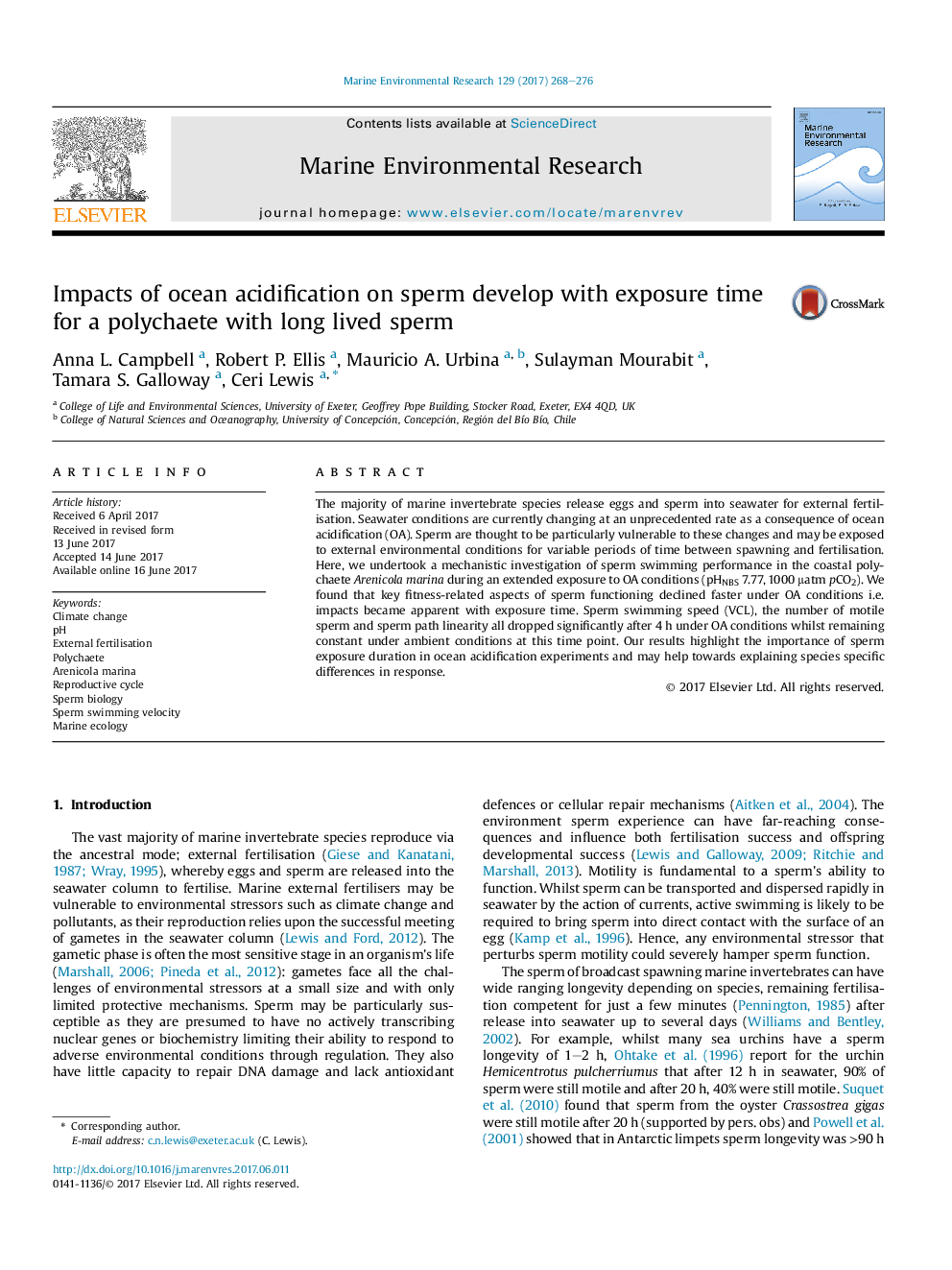| Article ID | Journal | Published Year | Pages | File Type |
|---|---|---|---|---|
| 5766210 | Marine Environmental Research | 2017 | 9 Pages |
â¢We applied a novel technique using dialysis tubing to marine sperm incubations.â¢The number and speed of motile sperm declined faster under OA conditions.â¢This was not underpinned by changes in sperm viability, respiration or ATP content.â¢Future OA studies should account for sperm exposure duration in their design.
The majority of marine invertebrate species release eggs and sperm into seawater for external fertilisation. Seawater conditions are currently changing at an unprecedented rate as a consequence of ocean acidification (OA). Sperm are thought to be particularly vulnerable to these changes and may be exposed to external environmental conditions for variable periods of time between spawning and fertilisation. Here, we undertook a mechanistic investigation of sperm swimming performance in the coastal polychaete Arenicola marina during an extended exposure to OA conditions (pHNBS 7.77, 1000 μatm pCO2). We found that key fitness-related aspects of sperm functioning declined faster under OA conditions i.e. impacts became apparent with exposure time. Sperm swimming speed (VCL), the number of motile sperm and sperm path linearity all dropped significantly after 4 h under OA conditions whilst remaining constant under ambient conditions at this time point. Our results highlight the importance of sperm exposure duration in ocean acidification experiments and may help towards explaining species specific differences in response.
Graphical abstractDownload high-res image (181KB)Download full-size image
